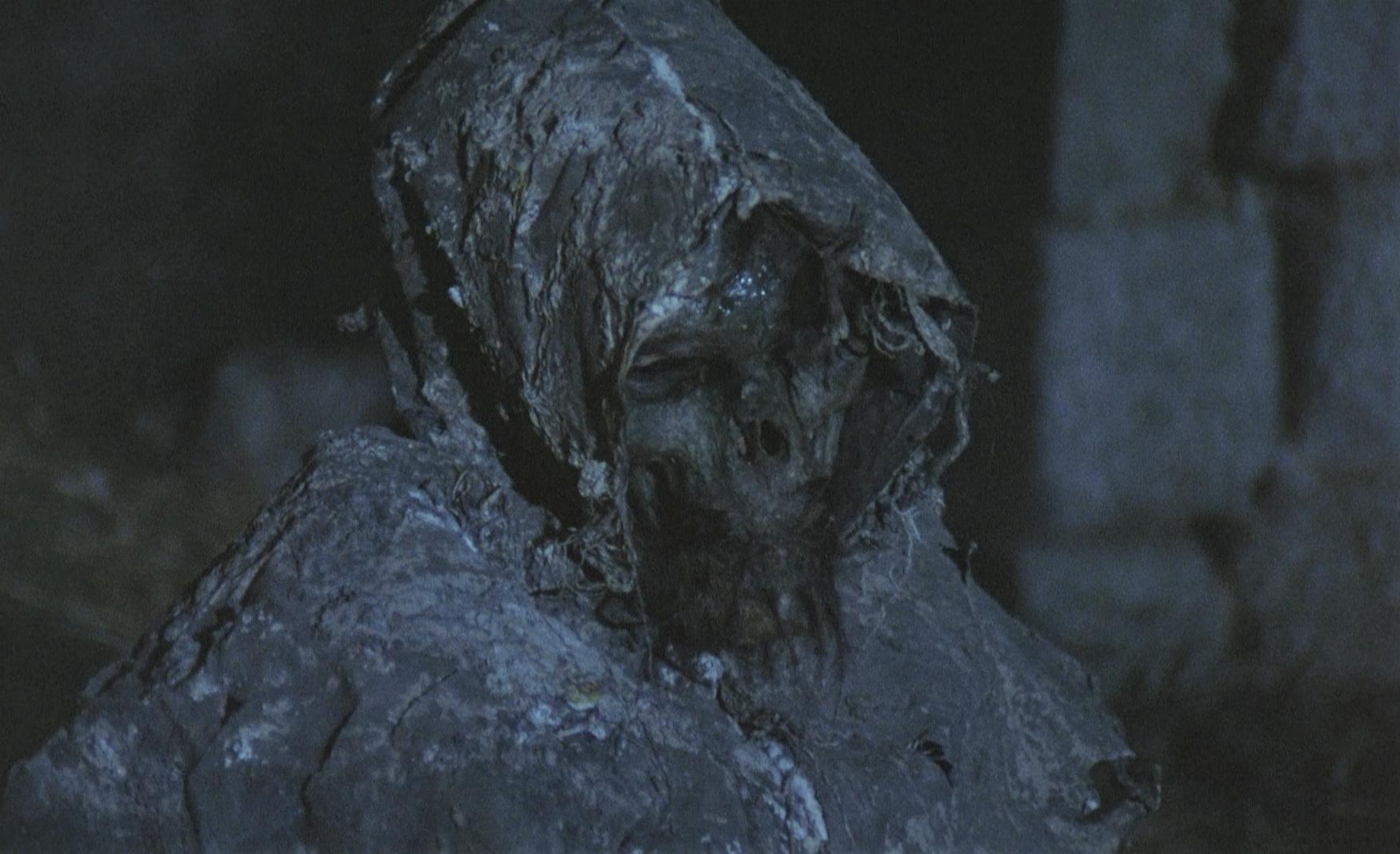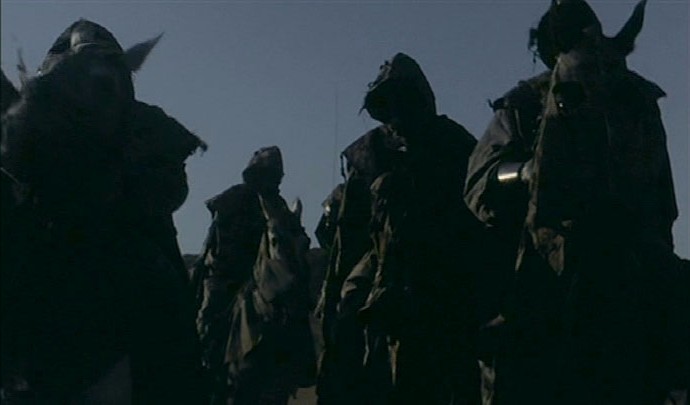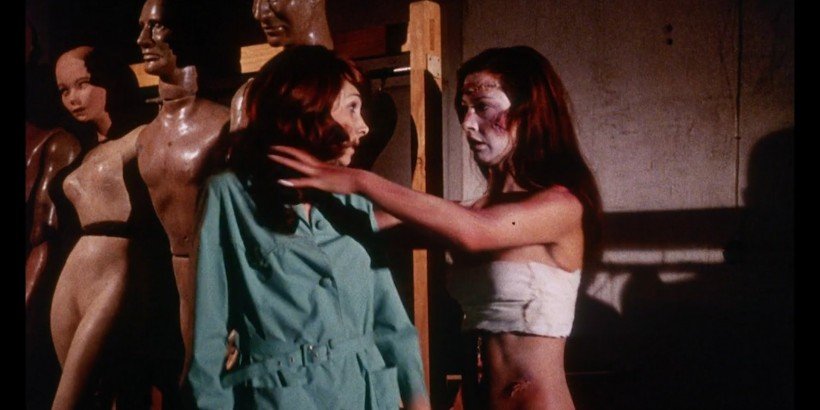
Summer in Montreal is always an exciting time. Downtown, Ste. Catherine Street is cordoned off from traffic beneath de Bleury for the Jazz Festival, where past years featured free outdoor acts such as Stevie Wonder, Allen Toussaint and James Brown. Not far, at the Marriot hotel bar, you can pass by Marc Maron abstaining from alcohol or Bill Burr imbibing. Further down the road, at Concordia University’s Hall Building, is the Fantasia International Film Festival. The Jazz and JFL Festivals have been world-renowned for decades, but obviously Fantasia is a personal favourite, and it’s especially nice that horror, a very specific film fan community, gets a month to showcase some of its finest recent works as well as restorations of lesser-known films and classics.
Fantasia has been virtual for two years, but what they lose with in-person events, they completely compensate for in screenings. This year, Fantasia opened strong with Synapse Film’s restoration of Amando De Ossorio’s Tombs of the Blind Dead for an upcoming Blu Ray release. Ossorio hadn’t made a lot of horror films before 1972, focusing on popular Westerns of the previous decade. After having minor success with a vampire film, he turned his attention to what George Romero had made popular four years previous in the US.

It’s a curious work, full of bizarre 70s sexual politics, ancient satanic templars and a brutally intense atmosphere. At a Lisbon hotel pool, Betty (Lone Fleming) runs into her old college roommate and lover Virginia (Maria Elena Arpon) and her boyfriend Roger (Cesar Burner). After agreeing to go to the country for the weekend, things get awkward when Virginia starts to come on to her, so Betty jumps off a moving train and takes refuge in an old abandoned monastery. The two men running the engine see her, but one cautions his son not to get involved. They know what’s there. After Betty disappears, Roger and Virginia head off to investigate. But Betty has long since been murdered by a satanic clan of the Knights Templar who had somehow found the answer to eternal life.
The restoration restores 15 minutes previously cut from the US release, and it looks fantastic, but those looking for added gore are likely to be disappointed. It’s not a particularly violent film, though when it does occur it’s effective as hell.
Ossorio takes seemingly no inspiration from his American counterparts. The Knights Templar are slow and shambling like Romero’s zombies, and it appears they’re not that hard to escape. However, this is not a zombie film in which the dead are insignificant hordes that serve as a metaphor. They’re a specific horde of dead satanic zealots. Something about handicapping the zombies oddly makes them more menacing. The reason for their blindness – their eyes pecked from their heads by crows after they were executed – is equally hideous. But you don’t quite understand just how intimidating these blind, beanstalk-sized creatures can be until you see them in action, astride their horses, riding a victim down. What they lack in numbers (though there are many more than initially appear), they make up for in brute force; relentless force at that.

Ossorio used their blindness to intensify fear. The zombies hunt by sound, the design of which in the film is effectively manipulated to ratchet up the fear. The clamping feet of horses as the zombies are astride them, increasing heartbeats and rapid breathing; it all becomes intentionally overbearing.
Synapse’s restoration is almost too clean, making day for night shots extremely obvious, but the atmosphere is so overwhelming that Tombs manages to overcome anything that might be considered dated. It works surprisingly well, the day for night only heightens the hypnotic fear the movie often generates. There are other effects that may come off as cheesy, but given that the plot is very much a product of its time, they just fit here.
Tombs of the Blind Dead gets a Just Desserts ending, though it’s surprising just who gets theirs in the last moments. It’s an ending too great to spoil, one that’s both maniacally funny and deeply unsettling. If it’s not a reason to get the Blu Ray, it’s certainly a brilliant offering from a Festival that manages to surprise every year.
The festival runs virtually from Aug. 5 – 25, 2021. Get your tickets here. For more about the festival’s history and founder, check out this excellent Variety piece.
This article was originally written by Kenny Hedges for Grimoire of Horror.
More from Fantasia Film Festival:
Confessions of a Serial Killer is a 1985 American horror thriller, written and directed by Mark Blair. Surprisingly, the film is the only writer/director credit to Mark’s name, never venturing… I first saw Alejandro Jodorowsky’s surreal, bildungsroman film, Santa Sangre, in 1989 on VHS tape. Watching it was like watching a slasher about a killer with a twisted Oedipal Complex… Born in 1946, Hideshi Hino stands out as a prominent Japanese horror artist, dedicating the majority of his life to conjuring various nightmares for his audience. Regrettably, in the Western… Panorama of Hell is a 1984 Japanese horror one-shot manga, written and illustrated by Hideshi Hino. Known as a master horror mangaka, Hino is most notable as the writer/illustrator for… Hey Mike Flanagan, we’ve found your next big project! New indie horror authors are crawling out of the woodwork every week, and just like indie films, their products are hit… Thine Ears Shall Bleed is a 2024 American period horror, written and directed by Ben Bigelow, with additional writing from William Bigelow. Previously working as writer and director of the… Regarded by many as Japan’s answer to Brigitte Bardot — both for her glamorousness and vaguely European looks (she wasn’t actually mixed-race) — Mari Atsumi became one of Japanese… Well-known in the extreme cinema community, Brian Paulin is a writer/director/editor/actor/key make-up effects artist for the film production company Morbid Visions in addition to playing guitar, drums, and singing for… In today’s world of flashy graphics and CGI, audiences have become immune to fantastical horror, pushing some writers to create content to test our boundaries with the extreme. In The… The femme fatale is one of the most compelling and enduring archetypes in film history, captivating audiences with their blend of beauty, mystery, and danger. These enigmatic women are uniquely…